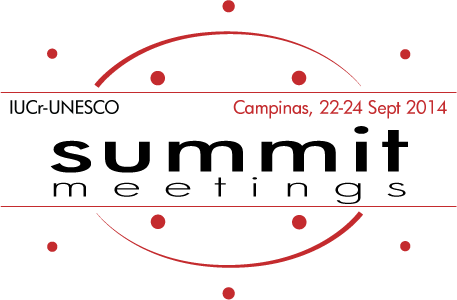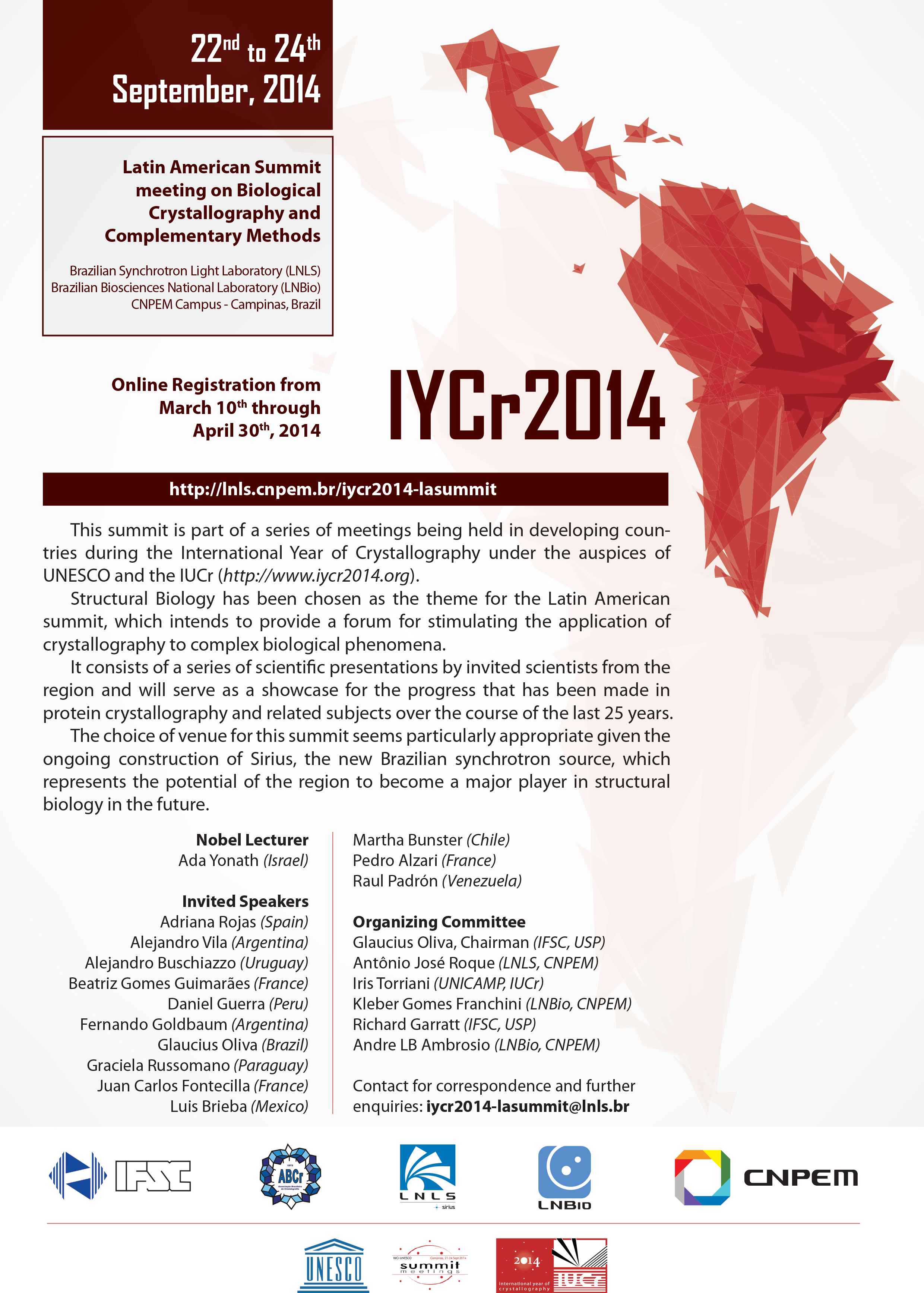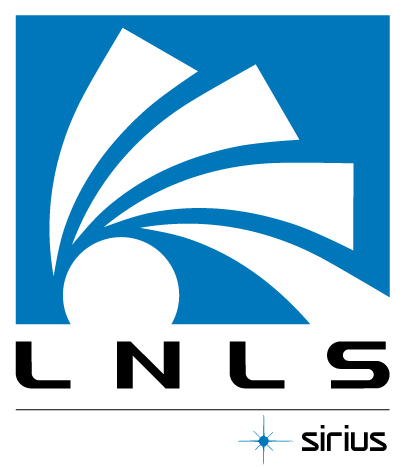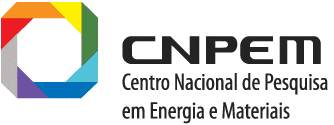IUCr–UNESCO Summit Meetings
IYCr Latin American Summit meeting on Biological Crystallography and Complementary Methods
  |
Organized by:
|
Under the auspices of the International Union of Crystallography (IUCr) and United Nations Educational, Scientific and Cultural Organization (UNESCO)
 |
Venue: Brazilian Synchrotron Light Laboratory (LNLS) Click here to download the poster of the event. |
IYCr2014 Latin America Summit Declaration
The IYCr2014 Latin America Summit Declaration took the form of an Appeal letter, with 67 signatories, addressed to the President of the IUCr, Prof Marv Hackert and to the Regional Director of UNESCO, Prof Lidia Brito. This letter is published below.
![[2014: Latin American Summit Meeting on Biological crystallography and complementary methods: Petition]](https://www.iycr2014.org/__data/assets/image/0003/101667/Campinas_signing_petition_1.JPG) |
| Initial signatories of the Summit Declaration. Seated at table (from left): Carlos Aguilar, Adriana Rojas, Richard Garratt, Alejandro Buschiazzo, Raul Padron, Alejandro Vila. Standing: Marvin Hackert (left) and Samar Hasnain (right). |
Appeal
24th September, 2014
Prof. Marvin Hackert
President, International Union of Crystallography
Prof. Lidia Brito
Regional Director, UNESCO
Dear Colleagues
We are pleased to report that the IYCr Latin America Summit Meeting on Biological Crystallography in Campinas, Brazil during September 22-24, 2014, has provided us an opportunity to extensively discuss and review the status of education and research in X-ray diffraction sciences in various countries in the region.
Over 100 senior researchers, early career researchers, post-doctoral fellows and students from 12 countries have participated in the event including a number of well established scientists in the North (Europe and USA) with origins in the region. The reflections from these scientists regarding the level of regional collaboration indicated that this is clearly sub-optimal, suggesting the need to take immediate action.
Many of us were engaged in extensive discussions focusing on the promotion of regional and international cooperation in the field of X-ray crystallography and complementary methods, in line with the objectives of the International Year of Crystallography. These discussions were consistent with recent efforts leading to the founding of the Latin American Crystallographic Association (LACA). The venue, being the home of the first synchrotron light source in the southern hemisphere, was fitting, and served also to highlight the ambitions of the region in constructing one of the world's most sophisticated, 4th generation light source, Sirius, before the end of the decade.
Through this letter, we request the IUCr and UNESCO to initiate actions to promote regional scientific collaboration including the holding of training workshops, encouraging the mobility of researchers within the region, promoting joint research projects, leveraging national bodies and institutions for financial support and facilitating regional conferences on the subject of X-ray crystallography and its applications in Latin America.
We also request the IUCr to facilitate the establishment of a "Latin American IYCr Cooperation Fund". We, as a community representative of our region, commit to persuade our academies, funding agencies and/or governments to provide annual contributions which are commensurate with each country’s economic reality. Our aim is to raise US $100K per annum for this fund. We request IUCr to provide encouragement by making an initial commitment of US $20K per annum for 3 years. We request IUCr/UNESCO to manage these funds.
The funds will be used for a variety of actions including:
- increasing collaboration and cooperation among scientists of the region,
- providing seed money for up to 2 projects per annum involving a minimum of 2 countries in the region, at least one of which should be well established in crystallography
- funding for short term visits (up to 3 months), primarily aimed towards an Early Career Researcher,
- training workshops at centres of excellence or emerging centres in the region,
- enabling the sharing of facilities within the region.
Signed by all those present from the region
|
|
|
Monday, September 22, 2014
Session I: Introduction
Chair: Glaucius Oliva
09:00 - 09:30 Marvin Hackert (IUCr President) IYCr2014 and the summit meetings
Session II: Historical Perspective on Protein Crystallography in Latin America
Chair: Richard Garratt (BRA)
11:00 - 11:30 Coffee Break
Session III: Biological Crystallography 1
Chair: Adela Rodríguez-Romero (MEX)
13:00 - 14:30 Lunch at the campus
Session IV: Biological Crystallography 2
Chair: Marcos Fontes (BRA)
15:30 - 16:00 Maria Cristina Nonato (BRA) Decoding cellular information with tandem-repeat galectins
16:00 - 16:30 Coffee Break
Chair: Glaucius Oliva (BRA)
18:00 - 20:30 Poster Session 1 + Social Gathering
23rd September 2014
Session V: A View from Abroad: Latin Americans Working Overseas
Chair: Samar Hasnain (IUCr)
11:00 - 11:30 Coffee Break
Session VI: 12:00 - 13:20 Round-table
Chair: Samar Hasnain (IUCr)
13:20 - 14:00 Lunch at the campus
Session VII: Biological Crystallography 3
Chair: Sergio Pantano (URU)
16:00 - 16:30 Coffee Break
Session VIII: Complementary Techniques 1
Chair: Roberto Salinas (BRA)
18:30 - 21:00 Poster Session 2 + Social Gathering
24th September 2014
Session IX: Biological Crystallography 4
Chair: Rafael V. Guido (BRA)
11:00 - 11:30 Coffee Break
Session X: Complementary Techniques 2
Chair: Marcelo Costabel (ARG)
13:00 - 13:10 Samar Hasnain Closing Remarks
13:10 - 14:30 Lunch at the campus
Structural Biology has been chosen as the theme for the Latin American summit. Under the auspices of UNESCO and the IUCr, the summit meeting intends to provide a forum for stimulating the application of crystallography to complex biological phenomena. The meeting will consist of a series of scientific presentations by invited scientists from the region and will serve as a showcase for the progress which has been made in protein crystallography and related subjects over the course of the last 25 years. The relatively small number of participants (around 100) should guarantee a friendly environment conducive to discussing the scientific future of the region and specifically the contribution that crystallography can make to that future. It is hoped to have representatives from Brazil, Argentina, Uruguay, Paraguay, Peru, Venezuela and Mexico amongst others.
The importance of creating greater integration with the wider scientific community will be emphasized by the participation of world-class Latin American scientists who have had successful careers outside of the region as well as by the opening lecture to be given by Nobel Laureate Ada Yonath.
See more at: http://pages.cnpem.br/iycr2014-lasummit
We would like to warmly invite you to attend the IYCr2014 summit meeting on “Biological Crystallography and Complementary Methods” to be held at the Brazilian National Synchrotron Laboratory (LNLS) in Campinas, Brazil, from the 22nd to the 24th of September 2014. This summit is part of a series of such meetings being held in developing countries around the world during 2014, each with its own specific theme. As you are aware, 2014 was adopted by the General Assembly of the United Nations as the International Year of Crystallography in celebration of the 100th anniversary of the awarding of the Nobel Prize in physics to Max Von Laue for his seminal work on the phenomenon of X-ray diffraction by crystals. This was followed a year later by a similar recognition given to the William and Lawrence Bragg. The choice of venue for the Latin American summit seems particularly appropriate given the ongoing construction of the new Brazilian synchrotron SIRIUS which represents the potential of the region to become a major player in structural biology in the future.
Glaucius Oliva, ChairmanSee more at: http://pages.cnpem.br/iycr2014-lasummit
Organizing Committee
Glaucius Oliva, Chairman (IFSC, USP)
Antônio José Roque (LNLS, CNPEM)
Kleber Gomes Franchini (LNBio, CNPEM)
Iris Torriani (Unicamp, IUCr, ABCr)
Richard Garratt (IFSC, USP)
Andre LB Ambrosio (LNBio, CNPEM)
See more at: http://pages.cnpem.br/iycr2014-lasummit/organizing-committee/

The event is expected to accommodate approximately 100 participants and expects to receive delegates from many Latin American countries who will be specifically invited by the organizing committee because of their important contributions to structural biology.
The remainder of places will be available for researchers, students and other interested parties to apply.
Depending on the demand it may not be possible to accept all applications.
See more at: http://pages.cnpem.br/iycr2014-lasummit/how-to-participate
Contact for correspondence and further enquiries
Event organizers at iycr2014-lasummit@lnls.br









